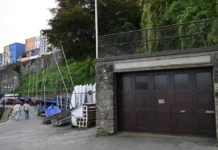As fuel poverty continues to create a ‘humanitarian crisis’, industry experts are looking at smarter ways to protect residents and properties
More than seven million households are facing fuel poverty this winter despite the autumn statement, according to campaigners. Fuel Poverty Awareness Day, started by the national fuel poverty charity, National Energy Action (NEA), helps to raise awareness of those in crisis and share guidance on how to keep those vulnerable warm and safe.
As the temperature continues to drop, residents may increase their gas appliance use from boilers to warm air heaters, cookers and fires. However, the very appliances sought for comfort and safety can place lives at risk. It is essential that gas appliances are correctly installed and maintained to reduce the dangers of leaks, fires, explosions and carbon monoxide poisoning. As millions of Britons face higher gas bills, there is a danger that a reduction in income will push regular appliance servicing further down the priority list, increasing the risks.
Another concern is that fuel-poor households may cut back on fuel use to try and ease the financial strain, leaving them vulnerable to cold homes and damp and mould growth. Cold homes can have devasting consequences, taking thousands of lives each winter. People living with mould are more likely to suffer from respiratory illnesses, infections, allergies or asthma, increasing the risks of ill-health and in some cases, fatal consequences.
As it becomes increasingly evident that fundamental change is needed to ensure that people are safe in their homes, legislation is being overhauled at an unprecedented rate across the UK. Changes to the Renting Homes (Wales) Act 2016 came into force on December 1st, 2022, to ensure that both private and social rented properties in Wales are fit for human habitation. This includes regulations on condensation, damp and mould, and fire and carbon monoxide safety. However, industry experts have expressed concern that traditional solutions for addressing damp and mould are often ineffective, time-consuming and strain already-squeezed budgets.
Nick Rutter, Co-founder of home safety technology specialist FireAngel, says, “Anti‑mould wall coatings and regular roof and gutter maintenance only go so far, and cavity or external wall insulation can increase problems if installed incorrectly. This is particularly problematic for social housing providers. As waiting lists and placement times get longer by the day, there’s intense pressure on social housing providers to fix problems quickly and move new tenants in. This, along with poor advice and limited access to specialist knowledge, can lead to only surface issues being treated, and providers and residents at risk of mould and damp reoccurring.”
The Internet of Things (IoT) can offer an alternative solution to help housing providers monitor humidity and temperature levels in a property. Carefully placed IoT sensors can provide specific data in real-time, allowing a much earlier opportunity to investigate and remedy potential problems.
Nick Rutter, adds, “Installing IoT sensors in properties allows housing providers to deliver tailored advice to relevant tenants and provide accurate information about where they might need to adopt different ventilation or heating practices.”
“Smart sensors can also provide a clear audit trail, recording accurate and regular environmental readings specific to each property and room. Since the data captured can be analysed remotely, there is less need for intrusive onsite investigations.”
“As the laws on home safety continue to tighten, data collected from IoT sensors may also play a role in future regeneration projects. Analysing data for trends and patterns can show housing providers which regions or properties are particularly prone to damp, such as those in coastal areas, and ensure those properties have the right insulation and ventilation installed.”
The Internet of Things now allows landlords to deploy a host of sensors in properties. This includes smoke and carbon monoxide alarms, enabling housing providers to monitor for fire risks as well as the onset of condensation, damp and mould.
Nick Rutter adds, “Our Home Environment Gateway delivers a holistic resident safety solution, encompassing fire safety, AI-driven risk stratification and background environmental monitoring. Through additional Zigbee sensors the solution takes resident safety and wellbeing to previously unachievable levels, enabling housing providers to prioritise condensation, damp and mould interventions and increase fire prevention measures for residents who need it most.”
“By tapping into IoT, we can create smarter, healthier homes that protect residents today, tomorrow and in the future.”
Help keep news FREE for our readers
Supporting your local community newspaper/online news outlet is crucial now more than ever. If you believe in independent journalism, then consider making a valuable contribution by making a one-time or monthly donation. We operate in rural areas where providing unbiased news can be challenging. Read More About Supporting The West Wales Chronicle


























